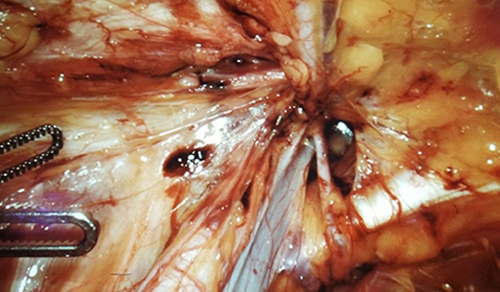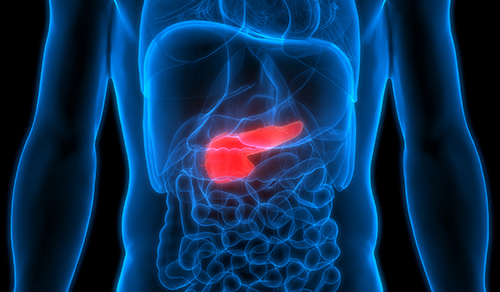Bringing Rehabilitation Medicine to the Developing World

Dr. Alfred C. Gellhorn
Tanzania is located on the eastern coast of sub-Saharan Africa, with a population of some 38 million people and one physician per 50,000 patients. “And there are exactly zero rehabilitation medicine doctors in Tanzania. It is essentially an unknown specialty,” says Alfred C. Gellhorn, MD, Director of Sports Medicine for the Department of Rehabilitation Medicine at NewYork-Presbyterian/
To that end, the Department of Rehabilitation Medicine Residency Program at NewYork-Presbyterian established the Global Health Elective in 2016. Under Dr. Gellhorn’s leadership, a resident and/or fellow spends a six-week rotation at several hospitals in Tanzania. “The elective serves many different roles,” says Dr. Gellhorn. “There’s definitely an education component for both our physicians and local physicians, as well as service and volunteerism components. It is not only providing residents with an opportunity to teach on a wide range of topics, at the same time, they are also learning what it is like to practice in a low resource setting and to be creative with what you have and don’t have. I’m hoping that those skills will translate broadly into our residents’ practices when they graduate.”
When the team travels to Tanzania, they bring expertise as well as needed medical equipment, including ultrasound for improving the diagnostic and treatment capabilities of the Tanzanian physicians. “When we went initially, we wondered where we could be of assistance and what our role in the hospital and in the community might be,” says Dr. Gellhorn. “It turns out that it’s very broad — from stroke care and treatment for spinal cord injuries to the orthopedic clinic, where there are patients with a great deal of nonsurgical problems for which there is really no appropriate management for them at this point.”
Among other initiatives, the NewYork-Presbyterian physicians have created a stroke registry and set up a program for ultrasound-guided platelet-rich plasma (PRP) injections. “Osteoarthritis is a very disabling disease anywhere, but especially in low income countries where treatment options are extremely limited. Joint replacement is not available and even more conservative approaches, such as physical therapy, steroid injections, and viscosupplementation injections, are unavailable because of cost.”
“It becomes more and more clear that there is a need for rehabilitation medicine in the developing world, which has not always been obvious. We tend to think that solving infectious disease, HIV, and providing clean water covers everything. The reality is that there is a lot of disability and need in the world, and we have much to give and to share from our perspective.”— Dr. Alfred C. Gellhorn
Dr. Gellhorn and his colleagues have been providing treatment with PRP at NewYork-Presbyterian for a long time with good outcomes. “This has become of particular interest in Tanzania where there are so few resources, but everyone has blood. The program has been a huge success. What is even more amazing is that by donating blood for their own use, the patients are filling up the blood banks to treat anemia, another huge problem in Africa. The blood is used not only to treat arthritis, but also for transfusions for children with malaria and young mothers who may have postpartum hemorrhage.”

Dr. Alfred C. Gellhorn

Dr. Isaac P. Syrop

Dr. Nasim A. Chowdhury
Now a member of the department’s Weill Cornell faculty and Medical Director of Cancer Rehabilitation, Nasim A. Chowdhury, MD, was the first resident to complete the Tanzania rotation. He says he feels fortunate for having had the experience, recalling one patient in particular who made a strong impression. “Her name was Happy, and she was in a school for children who are mentally handicapped because she walked with a limp,” says Dr. Chowdhury. “In her community, her limp was conflated with a lack of intellectual development, but what she really had was chronic hemarthrosis. There is so much education that needs to be done in teaching the elders how to properly evaluate their children so that they are not sent somewhere they don’t belong.”
During his rotation, Dr. Chowdhury worked in pediatrics and with burn patients, as well as in the ICU. “I wore many hats,” he says. “The purpose of our going there was to define and discover what was feasible to implement and what wasn’t. In fact, we found that anything we can envision, we can make happen, but it requires time on the ground. The Tanzanians have a lot of pride and a desire to make their country a better place, so anything is possible.”
Isaac P. Syrop, MD, the second resident to participate in the elective and who is now pursuing a sports medicine fellowship at Stanford University, also shares Dr. Chowdhury’s desire to become involved in global healthcare. Upon arrival in Mwanza, Dr. Syrop soon partnered with Dr. Isidor Ngayomela, an orthopedic trauma surgeon. “I spent a large part of my time in the orthopedic clinic treating musculoskeletal injuries very similar to what we would see in the U.S. — patients with arthritis of the knee and the hip, acute fractures treated nonoperatively, tendinopathy — and I quickly realized that the skill set of a rehabilitation doctor is extremely useful because so many patients suffer from musculoskeletal conditions for which there is little treatment in Tanzania,” says Dr. Syrop. “It was a shock that first day to note the acuity and severity that exists there.”
Dr. Syrop was instrumental in setting up the PRP protocol with Dr. Gellhorn. “During my stay we treated 40 patients with knee osteoarthritis with PRP injections over four weeks and we followed up with them as well,” he says. “We were looking to see if the patients and doctors would accept it. They did, and the patients did great. We have documented their pain relief and improvement in function.”
In June 2017, Dr. Gellhorn and Christopher J. Visco, MD, Vice Chair of Education in the Department of Rehabilitation and Regenerative Medicine and Director of the Residency Program, presented at the United Nations session, “Meeting the Demands of the 21st Century Through Innovative Technology,” discussing the efforts of the Global Health Elective and in bringing the PRP protocol with ultrasound applications to Tanzania.

In June 2017, Dr. Alfred C. Gellhorn (far left) and Dr. Christopher J. Visco (far right) presented their work on the Global Health Elective at a United Nations session on “Meeting the Demands of the 21st Century Through Innovative Technology.”
“One of our hopes as we develop and refine the Global Health Elective is that it becomes a model for other residency and fellowship training programs,” says Dr. Gellhorn. “The success and benefits on both sides have been so great that I think other programs would find it valuable involving their trainees in an initiative like this. As our relationship sphere gets stronger, it becomes more and more clear that there is a need for rehabilitation medicine in the developing world, which has not always been obvious. We tend to think that solving infectious disease, HIV, and providing clean water covers everything. The reality is that there is a lot of disability and need in the world, and we have much to give and to share from our perspective.”
Related Publications

Dual Honors for Dr. Joel Stein

Rehab Medicine: A Focus on Faculty 2018 Issue 1








